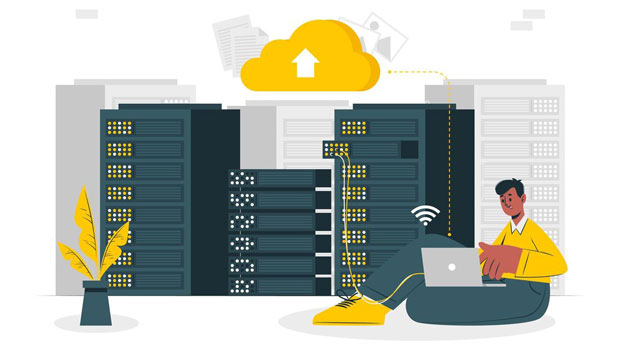In today’s rapidly evolving digital landscape, the need for efficient web scraping solutions has become paramount. Two popular proxy tools that have garnered attention for their functionality in cross-platform crawling scenarios are PYPROXY and NodeMaven Proxy. Both of these tools are integral to web scraping, enabling users to overcome geographical restrictions, improve anonymity, and manage requests effectively. However, their adaptability across different platforms, performance, and ease of integration vary significantly. This article will delve deep into the strengths and limitations of Pyproxy and NodeMaven Proxy, comparing their suitability for cross-platform environments, and providing a comprehensive understanding of their capabilities. What is Pyproxy?Pyproxy is an open-source proxy server built with Python. It is designed to facilitate web scraping and data extraction by acting as an intermediary between the user and the target website. Pyproxy’s primary advantage lies in its simplicity and the ability to integrate seamlessly into Python-based scraping projects. Its lightweight nature and compatibility with popular Python libraries make it a top choice for developers who are familiar with the language.One of the defining features of Pyproxy is its flexibility. It can easily handle HTTP and HTTPS requests and is capable of rotating IP addresses, which is crucial for bypassing IP-based restrictions that many websites impose. Additionally, Pyproxy allows users to manage proxy lists, making it easier to implement a rotating proxy strategy, enhancing anonymity and reducing the chances of being blocked.Key Features of Pyproxy- Customizable Proxy Rotation: Pyproxy supports dynamic proxy rotation, making it an excellent choice for large-scale data scraping that requires the use of multiple proxies.- Python Integration: Pyproxy integrates effortlessly with Python-based scraping libraries like BeautifulSoup, Scrapy, and Requests, making it a popular choice for Python developers.- Lightweight: Due to its minimalistic design, Pyproxy consumes fewer system resources, making it suitable for systems with limited processing power.- Cross-Platform Support: Being written in Python, Pyproxy can run on any platform that supports Python, such as Windows, Linux, and macOS.What is NodeMaven Proxy?NodeMaven Proxy, on the other hand, is a Node.js-based proxy solution designed to handle high-performance tasks, particularly in environments where scalability is critical. NodeMaven Proxy is built to cater to developers who work with JavaScript or Node.js environments. It is often used in scenarios requiring asynchronous, non-blocking I/O operations, which is where NodeMaven shines.NodeMaven Proxy offers a high degree of customization and can handle a significant amount of simultaneous requests due to Node.js’s event-driven architecture. This makes it ideal for handling large volumes of data extraction requests, particularly for real-time applications where speed and efficiency are crucial.Key Features of NodeMaven Proxy- Scalability: NodeMaven Proxy is designed to handle a large number of simultaneous requests, making it a great option for high-scale scraping applications.- Asynchronous Operations: Node.js’s non-blocking I/O operations allow NodeMaven Proxy to execute multiple tasks concurrently without any performance degradation.- Compatibility with JavaScript Ecosystem: NodeMaven Proxy integrates well with JavaScript libraries like Puppeteer and Cheerio, making it the go-to choice for developers who work within the JavaScript ecosystem.- Cross-Platform Support: Like Pyproxy, NodeMaven Proxy supports multiple platforms, including Windows, Linux, and macOS, as long as Node.js is installed.Performance Comparison in Cross-Platform CrawlingWhen it comes to cross-platform crawling, performance is key, especially in large-scale scraping operations where speed and efficiency can make or break a project. Both Pyproxy and NodeMaven Proxy offer solid performance, but they differ in how they manage system resources and handle simultaneous requests.Pyproxy is particularly suitable for smaller to medium-scale projects where Python-based scraping tools are already in use. While it is capable of handling large volumes of requests through its proxy rotation feature, its performance can be limited by Python’s single-threaded nature. Although Python’s threading model has improved over the years, it still does not match the concurrency levels achievable by Node.js.NodeMaven Proxy, thanks to its asynchronous, non-blocking architecture, can manage hundreds or even thousands of concurrent requests without compromising performance. This makes it a superior choice for high-demand environments, especially when the data extraction task is large and involves real-time processing. The ability of NodeMaven to handle multiple requests concurrently makes it more scalable than Pyproxy, which can be an essential factor in cross-platform crawling projects that require high throughput.Integration and Setup: Pyproxy vs NodeMaven ProxyPyproxy Integration is seamless for developers who are already working with Python. Setting up Pyproxy involves installing Python, setting up the necessary libraries, and configuring the proxy server. The process is straightforward and can be easily managed using pip for library installation. Additionally, the Python-based approach allows for extensive documentation and a large community for troubleshooting.NodeMaven Proxy Integration is ideal for developers working in the JavaScript ecosystem. The setup process involves installing Node.js, configuring the proxy settings, and integrating it with JavaScript scraping libraries like Puppeteer or Cheerio. The asynchronous nature of NodeMaven Proxy ensures that it integrates well with JavaScript’s event-driven architecture, but it requires a deeper understanding of Node.js to leverage its full potential.Security and AnonymityBoth Pyproxy and NodeMaven Proxy provide ways to enhance security and maintain anonymity during web scraping. Pyproxy offers built-in support for proxy rotation, which is essential for preventing IP bans and maintaining a high level of anonymity. Moreover, it allows for the management of proxy lists and supports both residential and datacenter proxies, giving users more control over the anonymity aspect.NodeMaven Proxy also supports proxy rotation and can be integrated with various proxy providers. However, its real strength lies in handling large-scale operations without raising red flags. With NodeMaven Proxy’s ability to handle multiple requests concurrently, it can scale up the usage of different proxy servers, minimizing the chances of detection and ensuring continued access to target websites.Cost-EffectivenessWhen it comes to cost, Pyproxy is an open-source solution, which means that there are no direct costs involved for the software itself. However, users must account for any additional resources such as proxies, server hosting, and potentially other Python libraries, which can add to the overall cost.NodeMaven Proxy is also an open-source solution, and like Pyproxy, the software itself is free. However, since NodeMaven Proxy is often used for large-scale scraping operations, the cost can accumulate due to the need for more robust server resources, additional proxy services, and possibly advanced monitoring tools.Both Pyproxy and NodeMaven Proxy provide powerful proxy solutions for cross-platform web scraping, but the choice between the two largely depends on the specific requirements of the project and the developer’s ecosystem preferences. Pyproxy stands out for Python-based scraping projects, offering simplicity, ease of use, and flexibility. It is best suited for small to medium-sized tasks and projects where Python libraries are already being utilized. On the other hand, NodeMaven Proxy excels in high-performance environments, providing scalability, concurrency, and asynchronous operations that are ideal for large-scale, real-time scraping tasks.In conclusion, while both tools are highly effective in different scenarios, the decision should be made based on the scale of the scraping operation, the technology stack being used, and the performance needs of the project.
Oct 13, 2025



































































